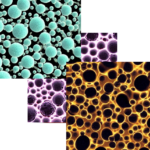Placenta storage typically refers to the collection and storage of various components of the placenta, such as placental tissue, cord tissue, or amniotic fluid, for potential future use. The placenta is a rich source of various cells and tissues, including mesenchymal stem cells, which have the potential to differentiate into different cell types.
Placental tissue contains various types of cells, including mesenchymal stem cells, which have regenerative properties. Storing placental tissue may offer potential therapeutic benefits in the future. It can be collected after childbirth. The tissue is processed, and specific components, such as mesenchymal stem cells, may be isolated for storage. The processed placental tissue is then cryopreserved and stored in specialised facilities at very low temperatures, ensuring the preservation of cellular viability.
Cord tissue, which is part of the umbilical cord, also contains valuable cells, including mesenchymal stem cells. Storing cord tissue is a form of stem cell banking. It can be collected at the time of birth along with cord blood. The tissue is processed to isolate and store mesenchymal stem cells. Similar to placental tissue, cord tissue is cryopreserved and stored in specialised facilities.
Amniotic fluid surrounds the fetus during pregnancy and contains various cells and substances. Storing amniotic fluid may provide a source of cells for potential therapeutic use.
Amniotic fluid can be collected during certain prenatal tests or procedures. The fluid is processed, and specific components may be stored. Processed amniotic fluid is cryopreserved and stored in specialised facilities.
The cells derived from placental tissue, cord tissue, or amniotic fluid are often referred to as mesenchymal stem cells and are believed to have regenerative and immunomodulatory properties. Research is ongoing to explore their potential applications in regenerative medicine. Like cord blood banking, storage of placental tissue or other placental components is often done through private banks. Families may choose to store these materials for potential future use by the individual from whom they were collected or for close family members. Some families may choose to donate placental tissues to public banks for use in research or clinical trials. This is typically altruistic and done to contribute to scientific advancements.
It’s important for individuals considering placenta storage to carefully research the options, understand the costs, and consult with healthcare professionals. The field of regenerative medicine is evolving, and while there is potential, the clinical applications of stored placental tissues are still an area of active research.







